Bringing home your first puppy feels like Christmas morning and chaos rolled into one. Your adorable ball of fur bounces off walls, chews your favorite shoes, and treats your living room like their personal bathroom.
Don’t panic—every successful dog owner started exactly where you are now. Effective puppy training transforms your mischievous pup into a well-behaved family member, and it’s easier than you think.
This comprehensive guide covers everything from establishing routines to using modern training tools. You’ll discover proven techniques that work for puppies of all breeds and sizes.
By the time you finish reading, you’ll have a complete roadmap for raising a happy, obedient dog that you’ll cherish for years to come.
Table of Contents
- Understanding Your Puppy’s Learning Window
- Setting Up Successful Puppy Training at Home
- Creating the Perfect Puppy Training Schedule by Age
- Essential Puppy Training Commands
- Mastering Puppy Training Toilet Techniques
- Using Puppy Training Pads Effectively
- Best Puppy Training Apps to Accelerate Learning
- Addressing Common Behavioral Issues
- Socialization and Environmental Training
- Advanced Training Techniques
- Building Long-term Training Success
- FAQs
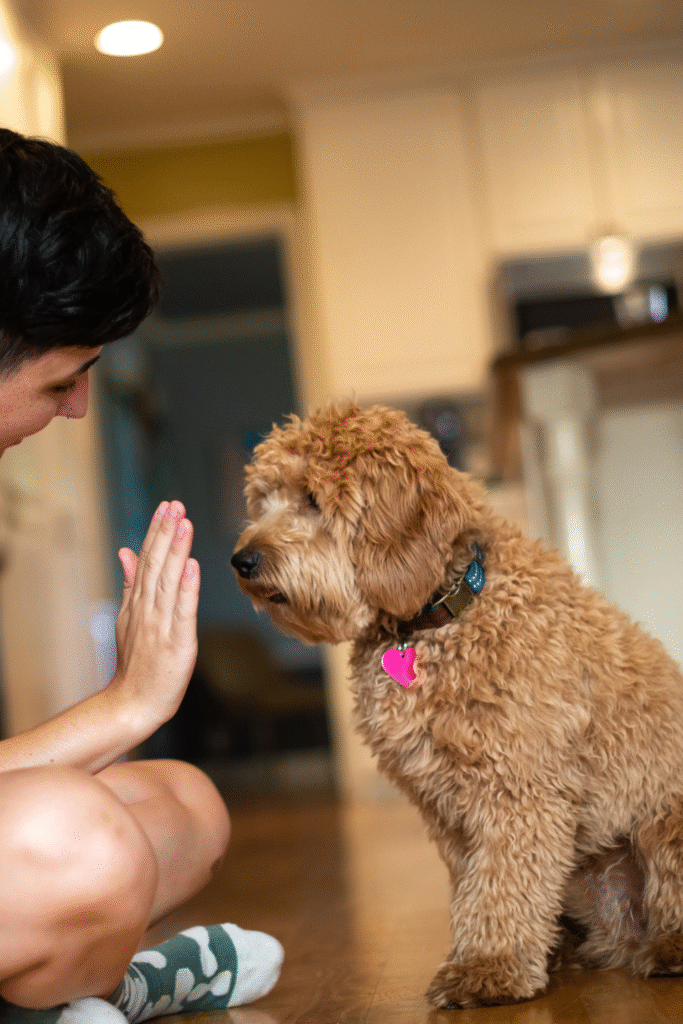
Understanding Your Puppy’s Learning Window
Your puppy’s brain works like a super-powered sponge during their first 16 weeks of life.
This critical socialization period determines how your dog will behave for the rest of their life.
Puppies learn fastest through positive reinforcement, which means rewarding good behavior rather than punishing mistakes.
Their attention spans last only 5-10 minutes at this age, making short, frequent training sessions more effective than marathon attempts.
Understanding your puppy’s developmental stages helps you set realistic expectations and avoid frustration.
Puppies between 8-12 weeks old are naturally curious and eager to please, making this the ideal time to start basic training.
Their brains are developing rapidly, creating new neural pathways every day through experiences and interactions.
Fear periods occur around 8-10 weeks and again at 16-20 weeks, when puppies become more cautious about new experiences.
During these times, focus on gentle exposure rather than intensive training.
Your puppy’s breed also influences their learning style—herding breeds like Border Collies learn quickly but need mental stimulation, while hounds may be more independent and require patience.
Consistency becomes your most powerful training tool because puppies thrive on predictable routines.
They don’t understand exceptions to rules, so “sometimes” behaviors confuse them more than help them learn.
Your puppy’s energy levels fluctuate throughout the day, with peak learning times typically occurring after meals and play sessions.
Recognizing when your puppy is tired, hungry, or overstimulated helps you choose optimal training moments.
The key lies in working with your puppy’s natural rhythms rather than against them, creating a foundation for lifelong learning and obedience.
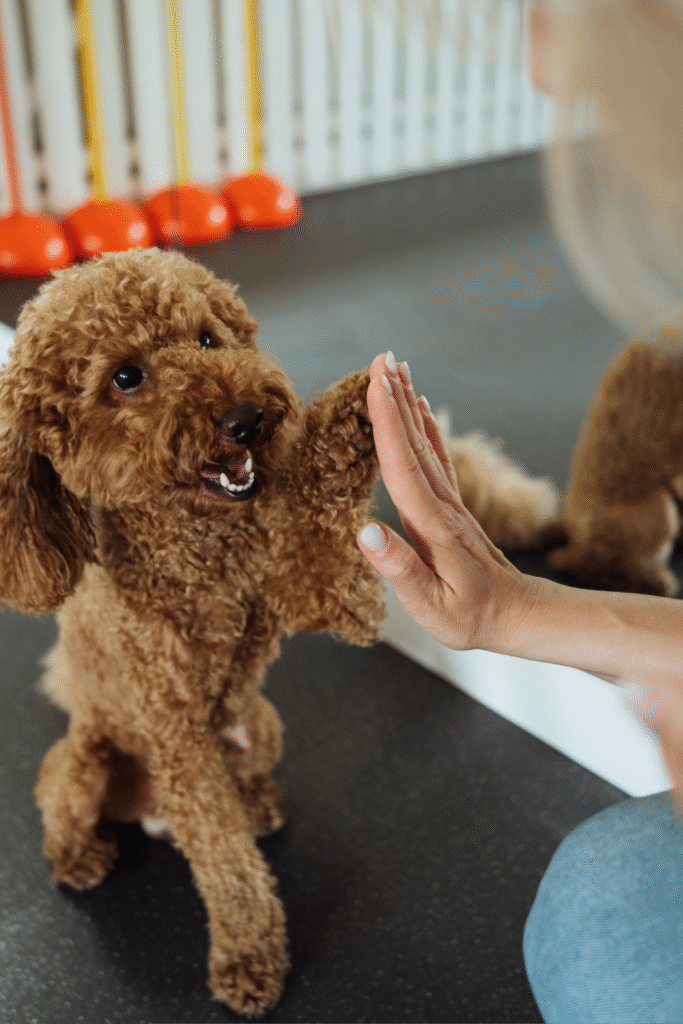
Setting Up Successful Puppy Training at Home
Creating the right environment for puppy training at home starts with removing temptations and setting your pup up for success.
Puppy-proof your space by securing electrical cords, removing toxic plants, and storing shoes and valuables out of reach.
Designate specific areas for eating, sleeping, playing, and going to the bathroom to establish clear boundaries from day one.
Your puppy needs to understand where they belong in each situation, reducing confusion and accidents.
Gather essential training supplies before your puppy arrives: high-value treats, a properly fitted collar and leash, training pads, cleaning supplies, and engaging toys.
Choose treats that your puppy finds irresistible—small, soft pieces that can be eaten quickly work best for training sessions.
Keep training supplies easily accessible throughout your home so you can capture teachable moments instantly.
A treat pouch worn around your waist ensures you’re always ready to reward good behavior.
Establish consistent household rules that everyone in your family follows without exception.
If your puppy isn’t allowed on the couch, this rule applies 24/7, not just when you feel like enforcing it.
Create positive associations with their designated spaces by feeding meals and offering special treats in these areas.
Your puppy should view their crate as a cozy den rather than punishment, so make it comfortable with blankets and toys.
Set up baby gates to control your puppy’s access to different areas of your home during the training process.
This prevents overwhelming your pup with too much freedom while keeping them close enough for supervision and interaction.
Use different rooms for different activities—kitchen for feeding, living room for family time, and designated outdoor spots for bathroom breaks.
Your home environment should communicate expectations clearly through physical boundaries and consistent routines that your puppy can easily understand and follow.
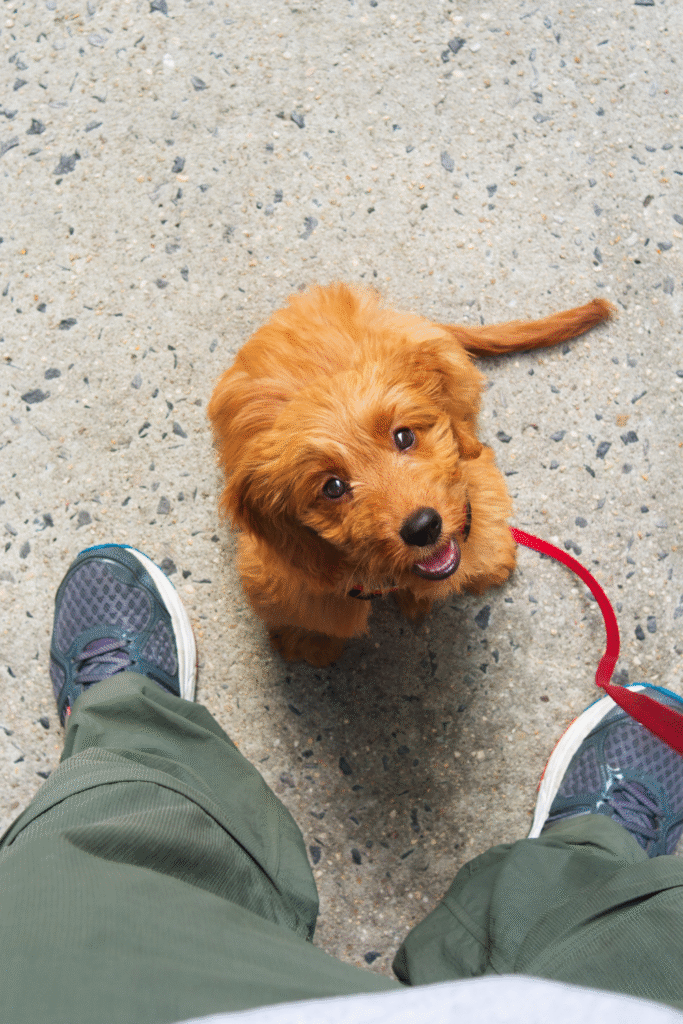
Creating the Perfect Puppy Training Schedule by Age
A well-structured puppy training schedule by age provides the roadmap your growing pup needs for optimal development.
Puppies between 8-12 weeks require frequent bathroom breaks every 1-2 hours, short 5-minute training sessions, and lots of supervised socialization with family members.
Their tiny bladders and developing digestive systems can’t handle long periods between potty breaks, so consistency prevents accidents and builds good habits early.
During the 12-16 week period, extend training sessions to 10-15 minutes and introduce more complex commands beyond basic sit and stay.
Your puppy’s attention span increases gradually, allowing for slightly longer lessons without mental fatigue.
Schedule training sessions after meals when your puppy is alert but not hyperactive, and always end on a positive note with successful command completion.
This age marks the perfect time to begin leash training and basic public socialization.
The 16-20 week phase brings increased independence and potential testing of boundaries, requiring firm but patient consistency in all training efforts.
Your puppy may seem to “forget” previously learned commands as they explore their growing confidence and physical capabilities.
Double your focus on recall training during this period, as your puppy’s natural curiosity may override their desire to come when called.
Increase exercise requirements but maintain structured training sessions to channel their energy productively.
From 20 weeks onward, your puppy can handle longer training sessions, more complex command sequences, and advanced behavioral expectations like waiting patiently for food or walking calmly past distractions.
Their cognitive abilities mature rapidly during this phase, allowing for problem-solving exercises and impulse control training.
Establish morning and evening training routines that become non-negotiable parts of your daily schedule.
Track your puppy’s progress weekly to identify areas needing extra attention and celebrate milestones achieved through consistent effort and patience.
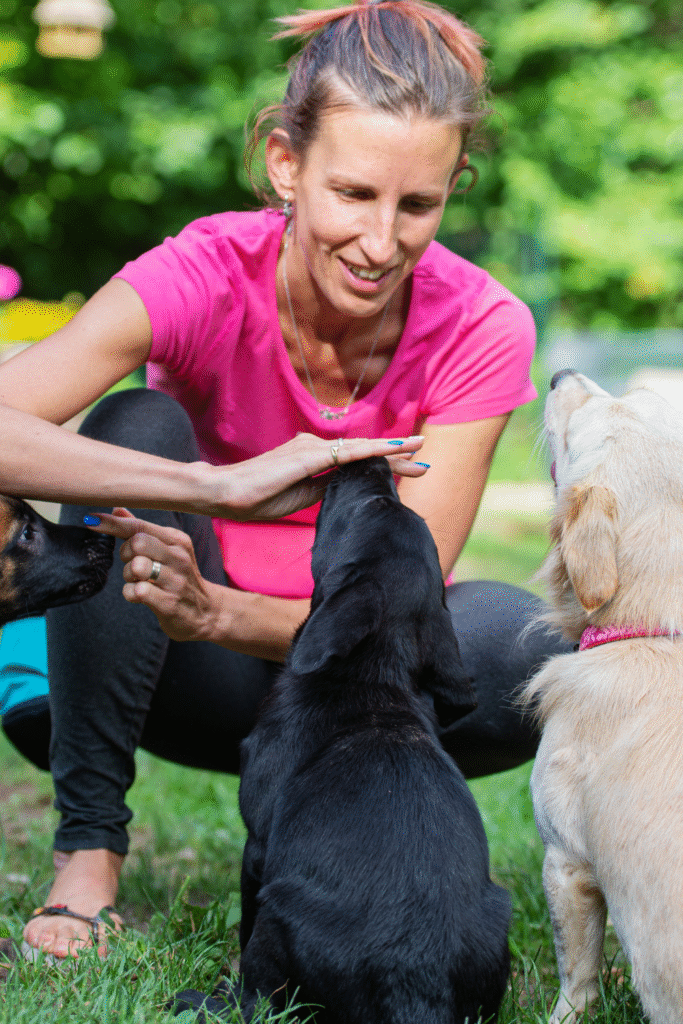
Essential Puppy Training Commands
Teaching your puppy basic commands creates the foundation for all future training and establishes you as a trusted leader.
Start with “sit,” the easiest command for puppies to learn and the building block for more complex behaviors.
Hold a treat close to your puppy’s nose, slowly lift it over their head, and say “sit” as their bottom naturally touches the ground.
Reward immediately with the treat and enthusiastic praise, repeating this sequence 5-10 times per session.
The “stay” command teaches impulse control and keeps your puppy safe in potentially dangerous situations.
Begin with your puppy in the sit position, hold your hand up in a stop gesture, and take one small step backward while saying “stay.”
Return immediately and reward if your puppy remained in position, gradually increasing distance and duration over multiple sessions.
Never call your puppy to break their stay—always return to them to release the command with “okay” or “free.”
“Come” might be the most important command your puppy ever learns, potentially saving their life in emergency situations.
Practice recall training in a secure, enclosed area where your puppy can’t run away or get distracted by external stimuli.
Start close to your puppy, say “come” in an excited voice, and reward generously when they reach you.
Make coming to you the best thing that happens to your puppy, never calling them to end fun activities or for unpleasant experiences like nail trimming.
“Down” teaches your puppy to settle and relax on command, invaluable for managing excitement and creating calm behavior in stimulating environments.
From the sit position, hold a treat at your puppy’s nose and slowly lower it to the ground between their paws while saying “down.”
Most puppies will naturally follow the treat into the down position, earning immediate rewards and praise.
Practice these four basic commands daily, keeping sessions short but frequent to maintain your puppy’s interest and prevent mental fatigue from overwhelming their developing attention span.
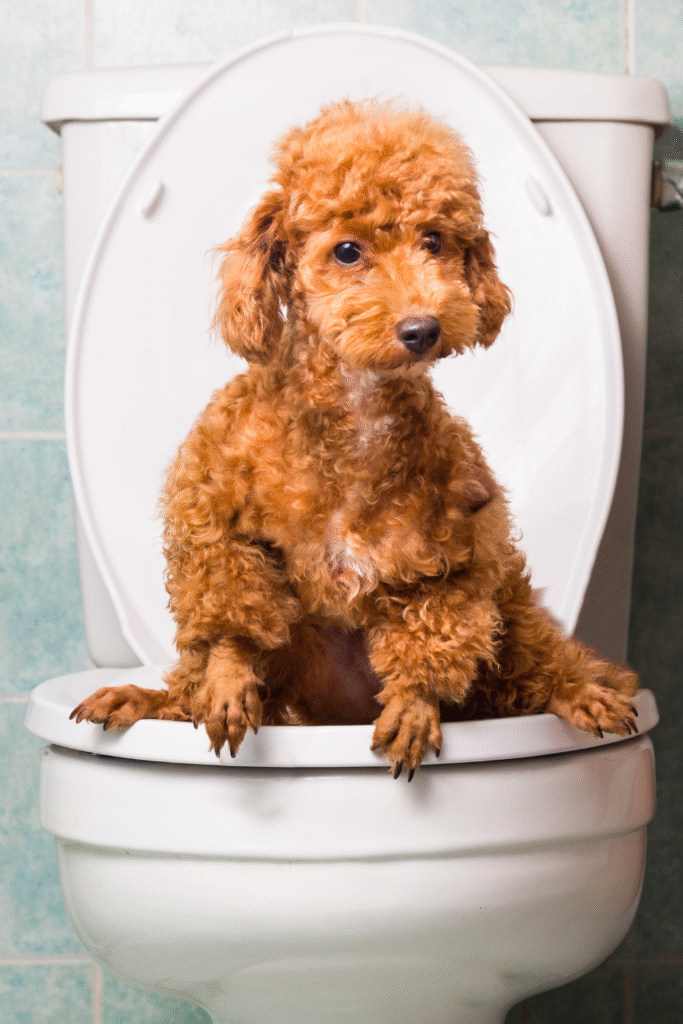
Mastering Puppy Training Toilet Techniques
Successful puppy training toilet habits require patience, consistency, and understanding of your puppy’s natural elimination patterns.
Puppies need to go outside immediately after waking up, eating, drinking, playing, and before bedtime—typically every 1-2 hours during their first few months.
Set multiple phone alarms throughout the day to remind yourself of potty break times until the schedule becomes second nature for both you and your puppy.
Choose a specific outdoor location for bathroom breaks and take your puppy there every single time, using the same door and walking the same path.
This consistency helps your puppy understand exactly what’s expected and where they should eliminate.
Stay outside with your puppy until they go, then reward immediately with treats and enthusiastic praise, making the experience positive and memorable.
Avoid playing or exploring until after your puppy has done their business to prevent distractions from the main purpose.
Accidents will happen despite your best efforts, so clean them thoroughly with enzyme-based cleaners that eliminate odors rather than just masking them.
Never punish accidents—simply clean up and increase supervision to catch signs that your puppy needs to go outside.
Watch for sniffing, circling, whining, or moving toward the door as signals that your puppy needs a potty break.
These behaviors often appear 10-15 seconds before elimination, giving you a narrow window to redirect them outside.
Crate training accelerates toilet training because dogs naturally avoid soiling their sleeping area when given appropriate opportunities to eliminate elsewhere.
Size the crate so your puppy can stand, turn around, and lie down comfortably but not large enough for them to eliminate in one corner and sleep in another.
Gradually extend the time between potty breaks as your puppy’s bladder capacity increases and they develop better control.
Most puppies achieve reliable house training between 4-6 months old with consistent effort and positive reinforcement techniques.
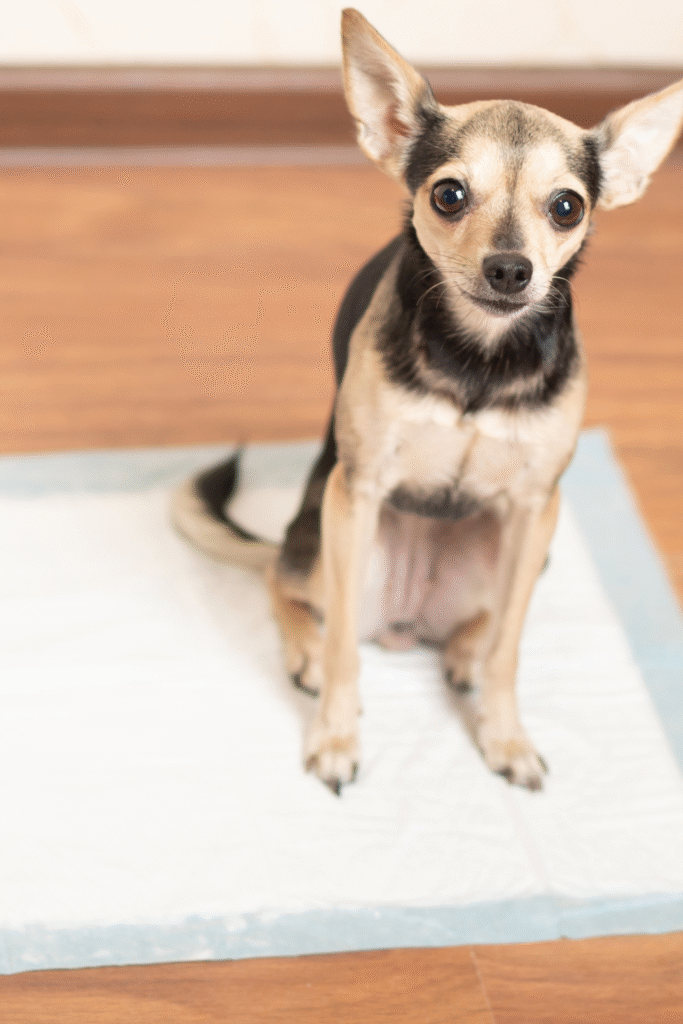
Using Puppy Training Pads Effectively
Puppy training pads serve as valuable tools for apartment dwellers, elderly owners, or situations where frequent outdoor access isn’t possible.
Place pads in a consistent location away from your puppy’s food and sleeping areas to avoid confusion.
Encourage your puppy to use the pad by bringing them to it during times they are likely to need to go, such as after meals, playtime, or waking from a nap.
Reward them with praise or a small treat when they use the pad correctly to reinforce the behavior.
Over time, you can gradually move the pad closer to the door or desired outdoor potty area to transition your puppy to going outside.
Consistency, patience, and positive reinforcement are key to successfully using training pads as part of your house training routine.
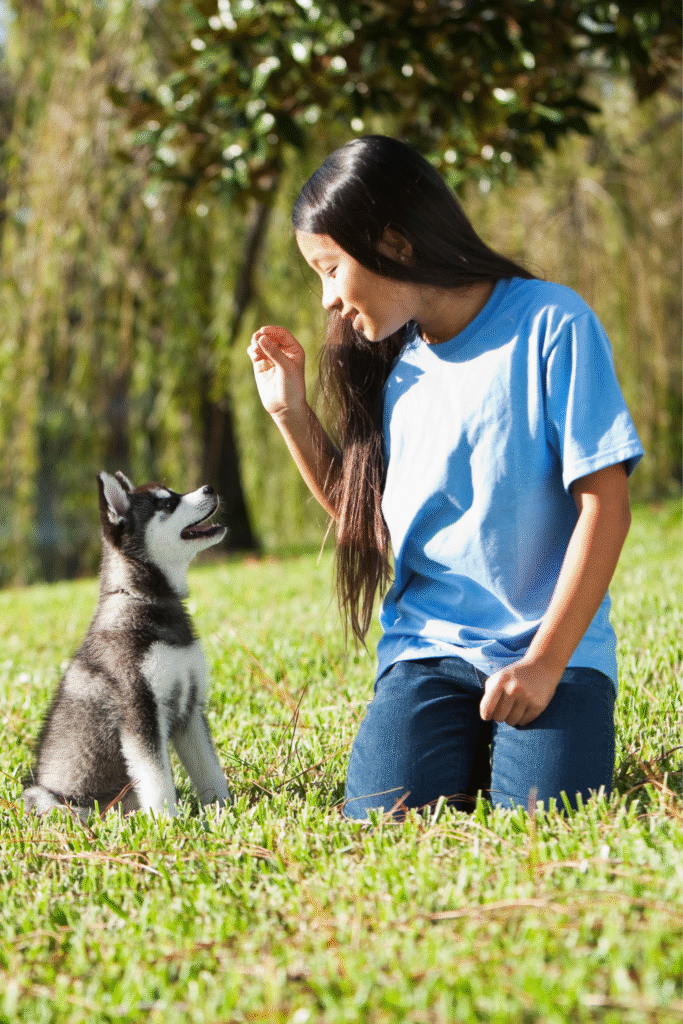
Best Puppy Training Apps to Accelerate Learning
When it comes to training your puppy effectively, choosing the right app can make all the difference.
Here are some of the best puppy training apps that combine ease of use and expert techniques to help you and your furry friend succeed:
- Pupford
Pupford offers a comprehensive training experience with step-by-step video tutorials led by professional trainers. The app provides guidance on teaching over 30 essential commands and behavioral cues. It also includes features like progress tracking, positive reinforcement strategies, and even a library of articles for troubleshooting common puppy issues.
- Dogo
The Dogo app is perfect for reinforcing good behaviors through personalized training programs. With daily training exercises and customizable challenges, the app allows your puppy to gradually learn new skills. Dogo also includes a “clicker” tool to make training consistent and enjoyable. You can even submit videos of your training sessions to receive feedback from certified trainers.
- GoodPup
Ideal for pet owners looking for one-on-one coaching, GoodPup connects you with expert trainers in real-time. The app features weekly video sessions tailored to your puppy’s specific needs, along with a 24/7 chat feature where you can ask questions. Topics range from potty training to advanced trick commands, ensuring every stage of training is covered.
- Paw Tracks
This app goes beyond training and serves as an all-in-one pet management tool. Paw Tracks allows you to track your puppy’s activities, including meals, walks, and potty breaks, while also integrating training goals. Its data-driven approach makes it easier to identify patterns and adjust your teaching techniques for better outcomes.
- iTrainer Dog Whistle & Clicker
A simple yet highly effective tool, iTrainer provides a digital clicker and a customizable dog whistle to use during your training sessions. This app focuses on strengthening the communication between you and your puppy through sound-based cues, making it suitable for obedience and recall exercises.
By integrating these apps into your training routine, you can create a structured and efficient environment for your puppy. Each app is designed with proven methods to address specific challenges while fostering lifelong learning and trust between you and your pet.
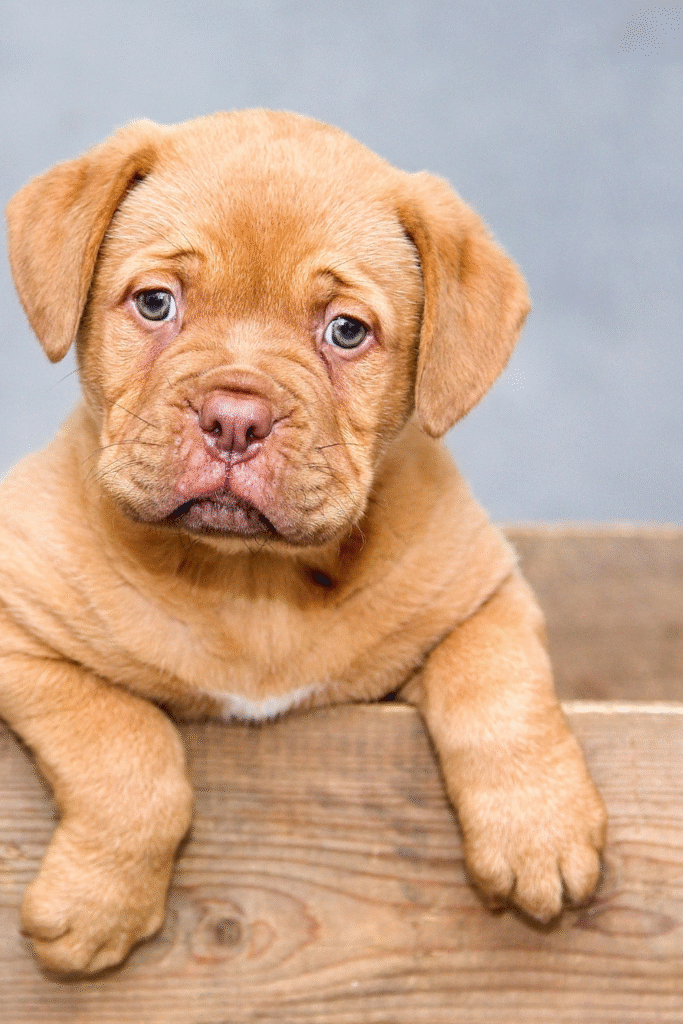
Addressing Common Behavioral Issues
Dealing with common behavioral issues in puppies is a vital part of their training and development.
Many apps designed for puppy training offer specific tools to help address these challenges with effective strategies.
For instance, excessive barking is a frequent concern. Apps with sound-based training features, such as dog whistles or calming tones, can help redirect your puppy’s attention and encourage quieter behavior.
Similarly, for puppies struggling with chewing or destructive tendencies, some apps provide positive reinforcement techniques to divert their focus to appropriate chew toys or activities.
Separation anxiety is another prevalent issue among puppies.
Training apps often include step-by-step plans to desensitize your puppy to being alone gradually, incorporating calming music, crate training tips, and scheduled routines to build their confidence.
Additionally, apps that track training progress help owners address house training challenges.
Features like potty reminder alerts and scheduled training logs ensure consistency, which is crucial for minimizing accidents inside the home.
By addressing these common behavioral issues with the help of training apps, owners can create a calm and well-adjusted pet who thrives in various environments.
The key is consistency, patience, and the use of proven methods tailored to the specific needs of each puppy.
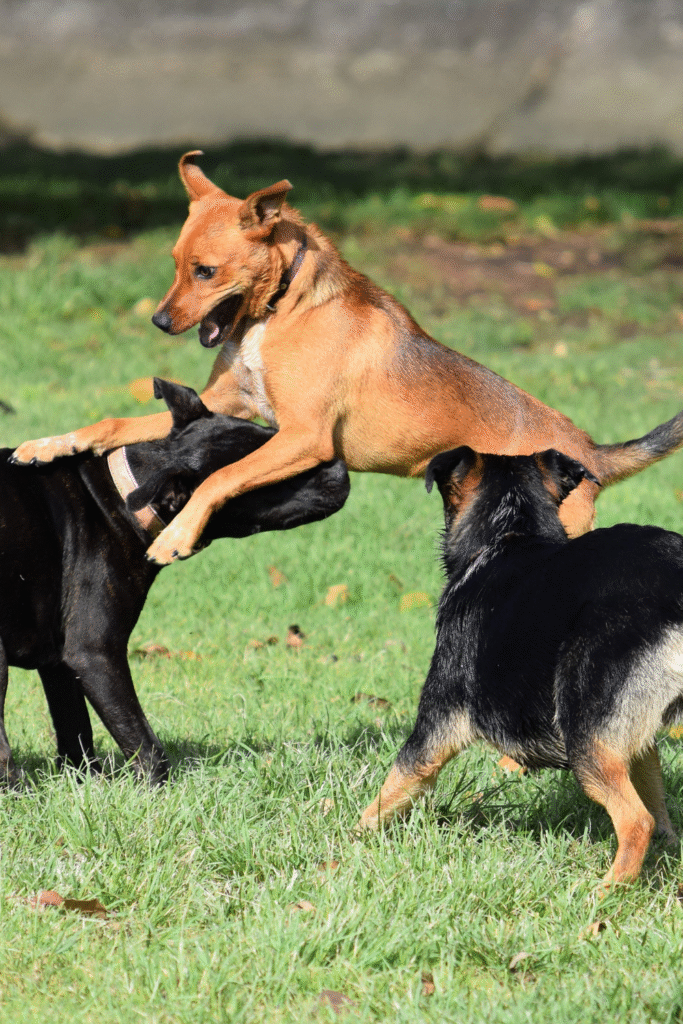
Socialization and Environmental Training
Socialization is a critical aspect of raising a well-rounded and confident puppy.
Early exposure to various people, animals, and environments helps prevent fear and aggression later in life.
Training apps can support this process by providing structured socialization checklists, ensuring puppies are introduced to diverse experiences during their formative period.
For example, these apps may recommend exposing the puppy to common noises, such as vacuum cleaners or doorbells, or environments like parks, crowded streets, and even car rides.
Environmental training goes hand in hand with socialization, as it focuses on teaching puppies to interact respectfully and calmly with their surroundings.
Apps can guide owners through steps like leash training, acclimating the puppy to new objects or textures, and reducing anxiety in unfamiliar places.
By combining socialization and environmental training, owners can help their puppies adapt to the unpredictability of everyday life, building trust and resilience along the way.
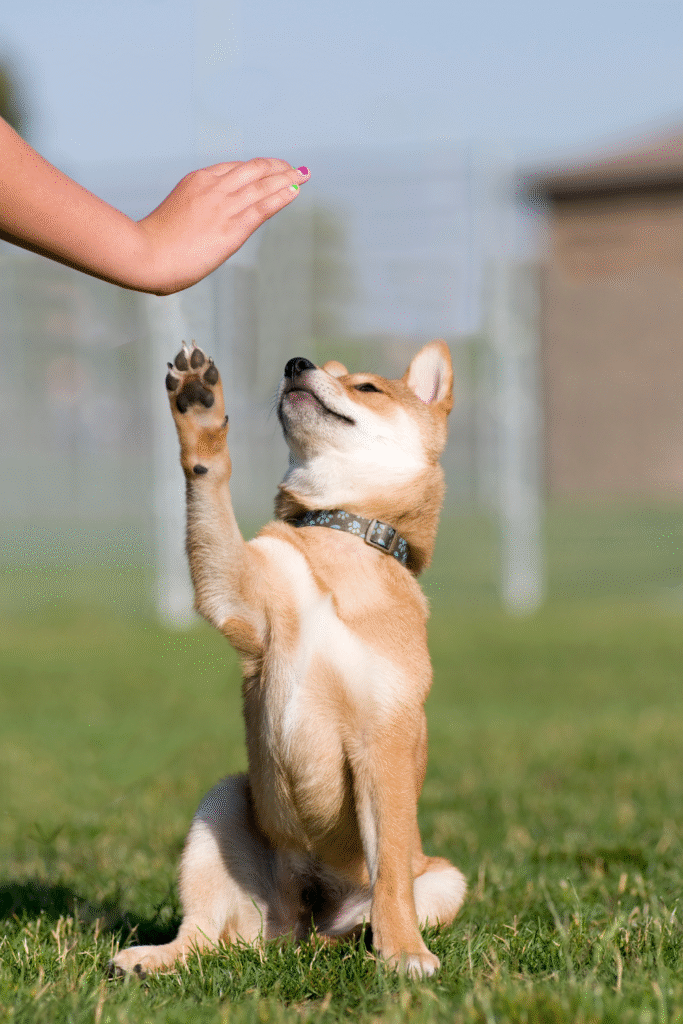
Advanced Training Techniques
Once the basics of socialization and environmental training are mastered, advanced training techniques can take a puppy’s learning to the next level.
These techniques often focus on building confidence, improving precision in obedience, and fostering mental stimulation.
For example, agility training introduces puppies to navigating obstacle courses, honing both their physical coordination and focus.
Scent work, which taps into a dog’s natural ability to track scents, can be a rewarding activity that challenges their intellect and highlights their unique abilities.
Advanced training also includes reinforcing impulse control through extended “stay” or “leave it” commands, which are essential for ensuring safety and control in busy environments.
Distance commands, where a dog responds to cues given from afar, can be practiced to refine their responsiveness further.
Positive reinforcement, such as treats, praise, or play, remains a key component of advanced training to motivate and encourage desired behaviors.
These practices not only strengthen the bond between owner and puppy but also set the foundation for a happy, well-adjusted adult dog.
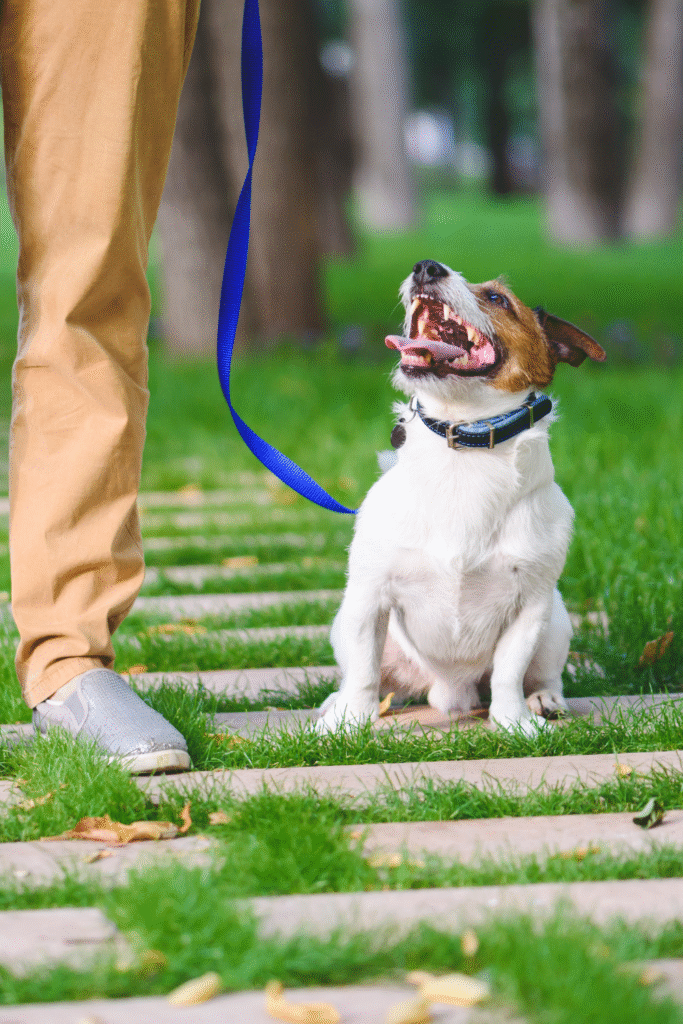
Building Long-term Training Success
Consistency and patience are fundamental to achieving long-term training success with your dog.
Establishing a daily routine with regular training sessions helps reinforce learned behaviors and ensures that commands become second nature to your pet.
It is important to tailor training to your dog’s individual needs and learning pace, as some breeds or personalities may require more time and reinforcement than others.
Incorporating variety into training sessions can also sustain your dog’s engagement and prevent boredom; this may include practicing commands in new environments, introducing interactive toys, or teaching new tricks.
Socialization plays a crucial role in long-term success as well, helping your dog develop confidence and adaptability.
Regularly exposing your dog to varied situations, people, and other animals fosters a well-rounded temperament and minimizes the likelihood of fear or aggression.
Additionally, maintaining positive reinforcement throughout your dog’s life—not just during initial training—ensures they remain motivated and happy to please.
Owners who stay consistent in their approach and provide a loving, encouraging environment will cultivate a confident, obedient, and well-mannered companion for years to come.
FAQs
Q1: How often should I socialize my dog?
A: Socialization should begin early in your dog’s life and continue regularly. Aim to expose your dog to new environments, people, and animals as part of their routine to maintain their adaptability and confidence.
Q2: What is the first thing you should train your puppy?
A: Begin with basic commands like “sit,” “stay,” and “come,” as these lay the foundation for good behavior and strengthen communication between you and your puppy.
Q3: What is the 10-minute rule for puppies?
A: The 10-minute rule suggests limiting your puppy’s structured activity or exercise to 10 minutes per month of age per session to prevent overexertion and ensure safe physical development.
Q4: How do you discipline a puppy?
A: Hand clapping and using shaker cans or horns can be intimidating enough to inhibit undesirable behavior. Avoid physical punishment, as it can harm trust and hinder training progress.
Q5: How often do puppies poop?
A: Puppies typically poop 3 to 5 times a day, but this can vary depending on their age, diet, and feeding schedule.
Q6: Should I wake my puppy up to pee?
A: Yes, especially during potty training. Puppies have small bladders and may need to go out every few hours, even at night, to prevent accidents and reinforce good habits.
Q7: How to punish a puppy for biting?
A: Instead of punishment, focus on redirecting your puppy’s biting behavior. Use a firm but calm “no” or an “ouch” to signal that biting is unacceptable, then provide them with an appropriate chew toy as an alternative. If the biting persists, you can briefly stop playtime or ignore them to show that biting leads to lost attention. Consistency and positive reinforcement for good behavior are key to effectively managing this issue. Avoid using harsh punishment, as it may lead to fear or anxiety in your puppy.
Q8: Do puppies need nap?
Yes, puppies need naps to support their growth and development. Their bodies and brains are rapidly growing, and regular rest helps them recharge and process new experiences. Puppies may nap multiple times a day, so it’s important to provide them with a quiet, comfortable space for rest.
